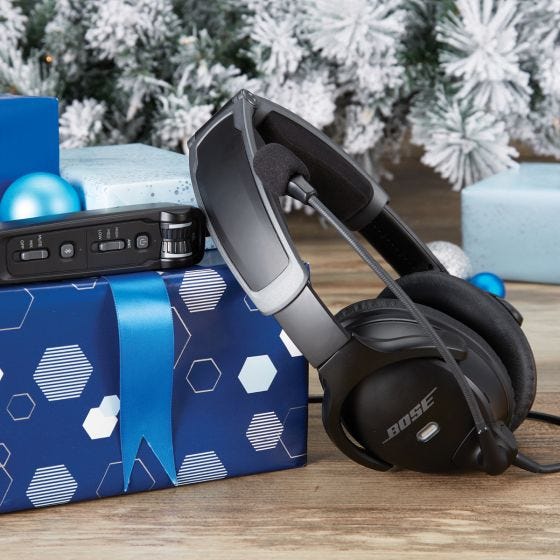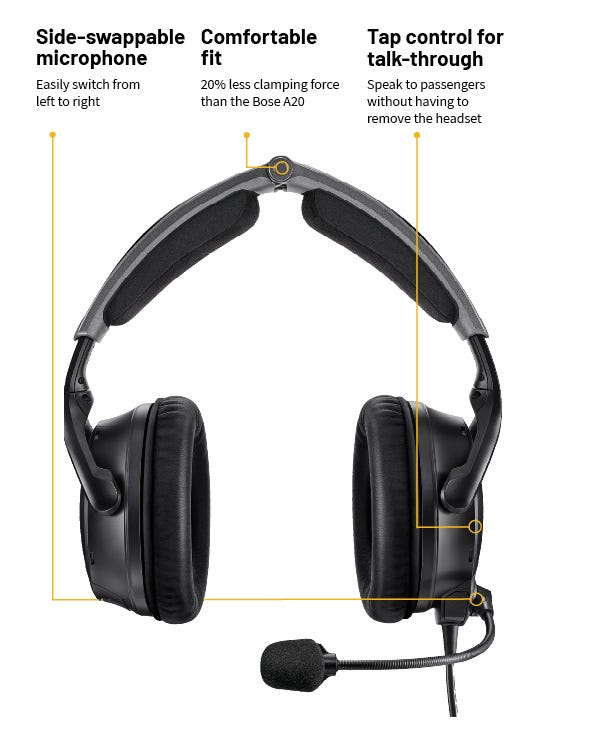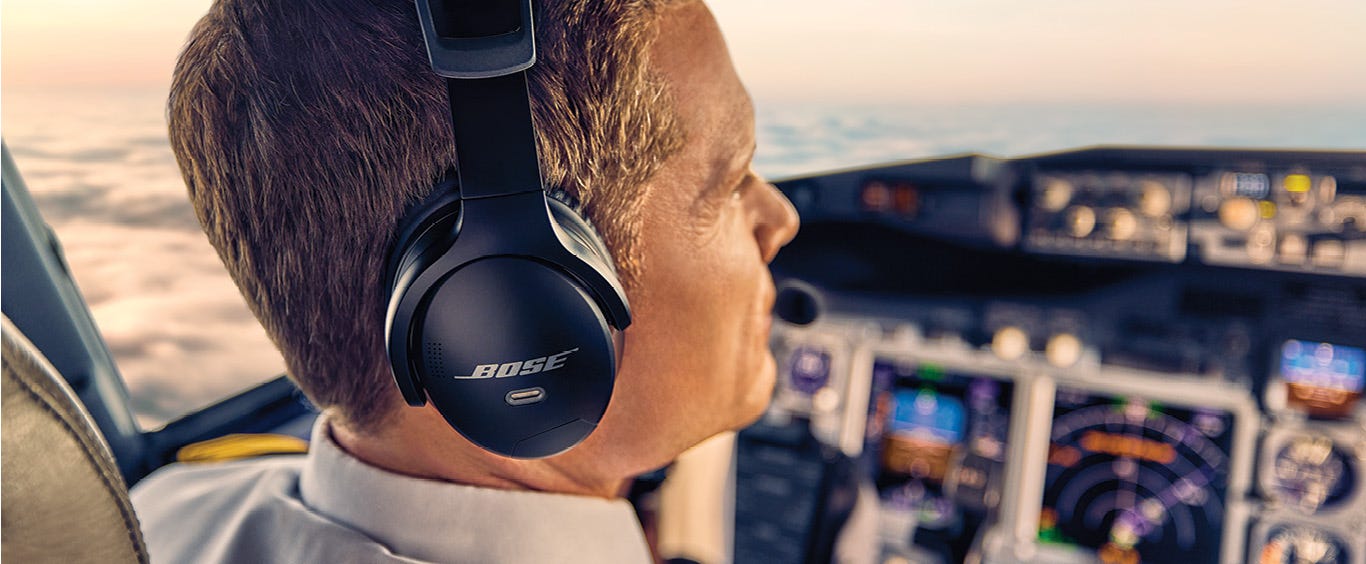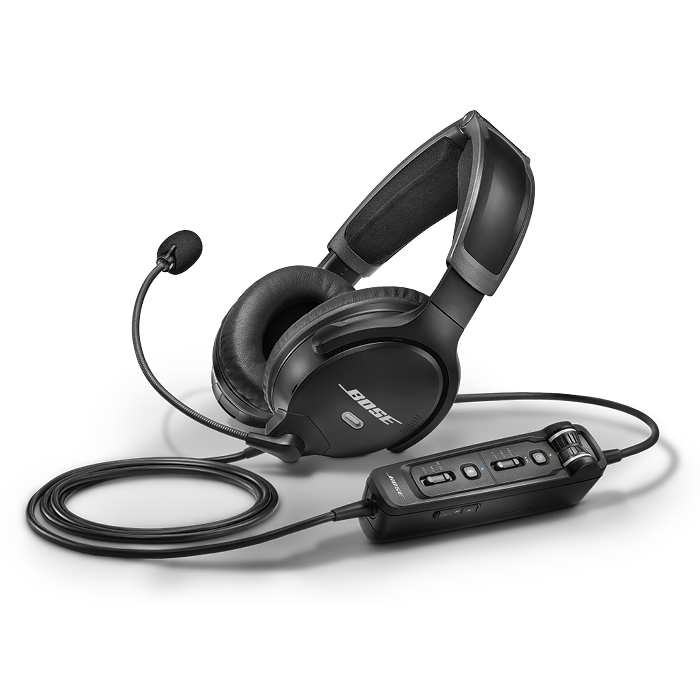Bose A30 Aviation Headset
FREE Bose Speaker & 10% off 2nd & subsequent Bose Headsets!
Free Shipping!

In stock
Backordered
Receive 1 free Bose Soundlink Micro Bluetooth Speaker per order when you buy Bose A30 or Bose ProFlight* ($119.00 value).
*One promotional speaker per order from November 26th through December 24th 2025. Speaker will automatically be included in your shipment.
Must be purchased on same order. Speaker will not appear in your cart or on your invoice.
The most comfortable headset we’ve ever worn
How do you make the best headset in aviation even better? By focusing on what matters. The Bose A30 offers performance you’ll appreciate on every flight, including improved comfort, quiet, clarity, and durability. Plus, features give pilots more control over ANR performance, microphone location, volume control, and power source. Whether you’re flying a Cessna or a Boeing, the A30 will make your next flight safer and more enjoyable.




Comfort.
Bose has a well-earned reputation for making the most comfortable headsets in aviation, and the A30 sets the standard. It features 20% less clamping force than the A20 (a very comfortable headset in its own right), so you’ll hardly know you’re wearing it. An aluminum alloy headband and a redesigned center torsion spring more evenly distributes weight on your head, and a headband pad provides an extra cushion. Plus, dedicated left and right earcups match the shape of your ears for a more natural fit. It truly is a headset you can wear all day without regret.
Quiet.
The A30 features a completely digital ANR system to provide full attenuation across a wide variety of noise environments, from loud warbirds to quiet jets. Enhanced direct wind noise rejection means better ANR performance when the vent is blowing on a hot summer day, and the firmware is upgradeable to take advantage of new technology. Best of all, these features do not reduce Bose’s famously long battery life: at least 45 hours of use, or 25 when using Bluetooth for external audio.
Clarity.
The most important job for an aviation headset is clear communications, and here the Bose A30 excels. The noise canceling microphone blocks background noise and the fully flexible boom makes it easy to position the microphone right where you need it. Active equalization enhances intelligibility of intercom conversations and air traffic control instructions, so you never miss a call. Optional Bluetooth connectivity makes it easy to get audio alerts from your favorite electronic flight bag app, make a phone call on the ground, or listen to music en route. As you would expect with Bose, you can't really see the sound quality, but it is superb.
Durability.
The A30 might weigh less than 15 ounces, but it’s still built to last. It meets the rigorous FAA TSO and EASA E/TSO-C139a certification standards, which means it has passed 145 different tests, including being dropped onto concrete and subjected to extreme humidity conditions. The redesigned cable is dramatically thinner and lighter, but it’s made with copper strands and a Kevlar core so it resists kinks and tangles. There are no exposed wires on the headband, and the A30 comes with a full 5-year manufacturer’s warranty.
Comfort.
Bose has a well-earned reputation for making the most comfortable headsets in aviation, and the A30 sets the standard. It features 20% less clamping force than the A20 (a very comfortable headset in its own right), so you’ll hardly know you’re wearing it. An aluminum alloy headband and a redesigned center torsion spring more evenly distributes weight on your head, and a headband pad provides an extra cushion. Plus, dedicated left and right earcups match the shape of your ears for a more natural fit. It truly is a headset you can wear all day without regret.
Quiet.
The A30 features a completely digital ANR system to provide full attenuation across a wide variety of noise environments, from loud warbirds to quiet jets. Enhanced direct wind noise rejection means better ANR performance when the vent is blowing on a hot summer day, and the firmware is upgradeable to take advantage of new technology. Best of all, these features do not reduce Bose’s famously long battery life: at least 45 hours of use, or 25 when using Bluetooth for external audio.
Clarity.
The most important job for an aviation headset is clear communications, and here the Bose A30 excels. The noise canceling microphone blocks background noise and the fully flexible boom makes it easy to position the microphone right where you need it. Active equalization enhances intelligibility of intercom conversations and air traffic control instructions, so you never miss a call. Optional Bluetooth connectivity makes it easy to get audio alerts from your favorite electronic flight bag app, make a phone call on the ground, or listen to music en route. As you would expect with Bose, the sound quality is superb.
Durability.
The A30 might weigh less than 15 ounces, but it’s still built to last. It meets the rigorous FAA TSO and EASA E/TSO-C139a certification standards, which means it has passed 145 different tests, including being dropped onto concrete and subjected to extreme humidity conditions. The redesigned cable is dramatically thinner and lighter, but it’s made with copper strands and a Kevlar core so it resists kinks and tangles. There are no exposed wires on the headband, and the A30 comes with a full 5-year manufacturer’s warranty.
Putting the pilot in control
The A30 works right out of the box—just plug it into the airplane and turn it on to enjoy clear communications and impressive noise cancellation. But Bose understands that different airplanes and different missions call for different capabilities. That’s why this headset offers unmatched customization features for pilots.


Specs


| Weight | 14.2 oz. |
| ANR | Yes |
| Auto shut-off | Yes |
| AUX audio in (wired) | Yes |
| Bag Included | Yes |
| Bluetooth | Yes |
| Stereo/Mono | Both |
| TSO'D | Yes |
| Warranty | 5 years |
What cable do I need?
Most headsets come in multiple cable configurations. Choosing the right one is pretty easy, it just depends on what type of aircraft you fly:
This is by far the most common style, with separate microphone and headphone plugs (so-called PJ plugs). Almost every airplane ever built has these two plugs in the panel, so these headsets are universal. The only downside is that, for ANR headsets, you will need to use AA batteries to power the headset.
The second most popular style, sometimes called the "LEMO plug," requires no batteries since it is powered by the panel. This is convenient, but it does require the 6-pin plug to be installed in the panel. While many newer airplanes come with this option, most older airplanes do not. For these applications, you'll need to have your avionics shop wire in the plug - not a big job, but not something pilots can do on their own
Helicopters use a single, shorter plug (that is not compatible with airplanes). This is not like the 6-pin plug above, however, since an ANR helicopter headset will still need AA batteries. The only confusing part is that some helicopters also have a 6-pin (or LEMO) plug. In these helicopters, there are two different single plug connections.
Less common is a single 5-pin connector that is made for Airbus jets. When in doubt, we recommend buying the battery powered, twin plug model. This is the most universal option, and will work in almost any airplane. If you have a 6-pin plug in your airplane or you plan to install one, the aircraft powered model is a nice option.


